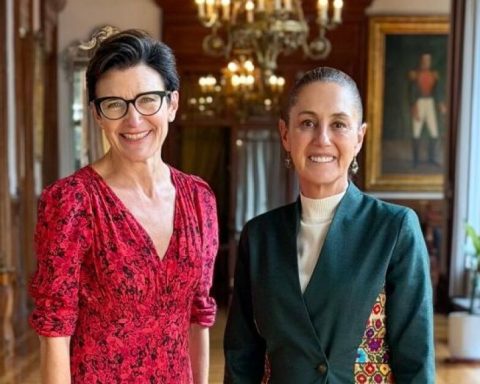Babies, teenagers, adults and seniors. Everyone woke up early this Sunday (12) to celebrate the Gigantes da Lira parade in Laranjeiras, in the South Zone of Rio de Janeiro. One of the most traditional children’s blocks in the city brought Brazilian tropical forests as its theme this year. In addition to the colorful vegetation, animals such as monkeys, jaguars and alligators were represented in the group’s costumes and allegories.
Created in 1999, Gigantes da Lira celebrates its 25th anniversary in 2023. It usually attracts around 3,000 people in the parade, which takes place in the week before Carnival. The block is one of the pioneers in the city to focus on the revelry of children and families. For this reason, scenes such as grandparents jumping with their grandchildren or mothers breastfeeding their children are common and out of line with the style of other popular blocks in Rio. But Gigantes’ repertoire is not restricted to children’s songs. The traditional sambas and Carnival marches rocked the public in Laranjeiras until early afternoon.
Fire and passion
“You are light, you are lightning, star and moonlight, sunny morning, my iaiá, my yoyo…”. The verse of the song by singer Wando announces the return of brega to Rio’s carnival. The Fogo e Paixão block once again occupies Largo de São Francisco de Paula, in the city center, after two years of interruption due to the coronavirus pandemic. This situation is remembered in this year’s theme: Reencontro da Paixão.
In the repertoire, there are traditional songs that were present in all 11 editions of the block. The ones that move the most with the public, according to the organizers, are “Evidências” (Chitãozinho & Xororó), “My blood boils for you” (Sidney Magal) and “Love and power” (Rosana). In addition to the music that gives the block its name, of course.
News
But this year’s presentation also has news. Songs by João Gomes, Glória Groove and Léo Santana are being played for the first time.
There is also space to honor two singers who died in the last two years: Gal Costa and Marília Mendonça. And special appearances by two singers. The first is João Cavalcanti, who came from the Casuarina group. Those responsible for the block called him after seeing the singer perform with the Salvador Symphony Orchestra, where he sang brega classics. The second guest is Bartô Galeno, icon composer of the brega root in the Northeast. The song Saudade Rosa, written by him, was rescued and was recently successful in memes on social networks.
cheesy is pop
João Marcelo de Oliveira, one of the organizers of Fogo e Paixão, celebrates the success that the group achieved at the Rio carnival and has no doubts: brega is pop.
“We’ve been working all these years – and I think we’ve been successful – to deconstruct the pejorative image of brega. He is a way of being. We joke that brega is a lot: he loves a lot, suffers a lot, is very colorful. Brega is always a tone above. And when it’s happy, it’s very happy. And the songs that we choose for the repertoire are songs that everyone can sing. Sometimes the person is embarrassed to sing in public or sometimes they don’t even know they know the song. But when she plays, she sings along.”
In 2020, the block celebrated 10 years of existence. It was created at the end of 2010 and had its first parade in Carnival 2011. It all started with batuqueiros from other blocks, who traveled together and met in bars. In these circles of music and beer, someone realized that the most lively time of the meeting was always when someone played cheesy music. And then, the idea of making a block dedicated to the popular musical style came up.
In the first year, without much expectation, the founders expected to have 15 to 20 people for the battery. But in the first rehearsal, more than 50 percussionists appeared. Today, including drums, technical staff and support, there are around 150 people involved in organizing the block. In the first Carnival, the audience was from 1500 to 2000 people in Largo de São Francisco. The number increased over time and, in the last three years, the average number of revelers was between 30 and 40 thousand.

















